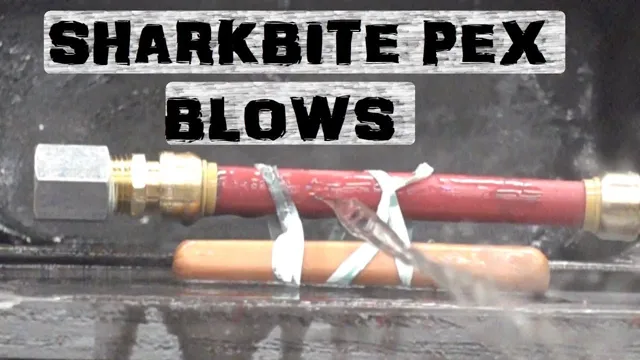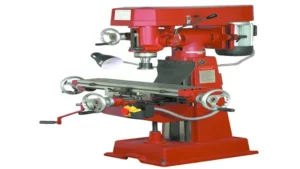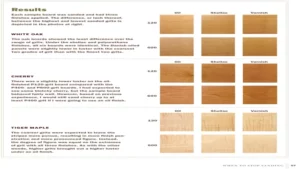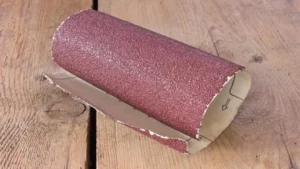Do you know what type of piping material is best suited for your plumbing needs? If you’re in the market for a reliable and long-lasting option, PEX piping might just be the perfect fit for you. But just like any other material, PEX pipes come with their own set of pressure ratings and applications. In this blog, we’ll explore everything you need to know about PEX pipes, from their basics to their potential uses.
Whether you’re a homeowner or a plumbing expert, this guide will help you make an informed decision that will benefit your home’s plumbing system. So let’s dive into the world of PEX pipes together!
What is PEX?
PEX (cross-linked polyethylene) is a type of flexible plastic tubing used in plumbing and heating systems. One of the major advantages of PEX is its ability to handle high pressure. PEX can generally hold up to 200-250 psi at room temperature, which is more than enough for most residential applications.
However, it’s important to note that the maximum pressure rating can vary depending on the size and brand of the PEX tubing, as well as the temperature and type of fluid being circulated. It’s always best to consult with a professional plumber or the manufacturer’s specifications to ensure that you’re using the correct type of tubing for your specific needs. With proper installation and maintenance, PEX can provide a reliable and long-lasting solution for your plumbing needs.
Definition and Composition
PEX, which stands for cross-linked polyethylene, is a popular and versatile type of plastic pipe commonly used in residential and commercial plumbing systems. Unlike traditional piping materials such as copper or iron, PEX is flexible and can be bent and shaped around corners, making installation much easier and faster. This also means that PEX is less prone to leaks and cracks caused by shifting or settling of the building’s foundation.
PEX is usually color-coded for easy identification and comes in a variety of sizes to accommodate different plumbing needs. Whether you are repairing a faucet or installing a new plumbing system, PEX is a great choice that can save you both time and money while providing high-quality, long-lasting results. So, if you are looking for a durable and reliable plumbing option, consider PEX for your next project.
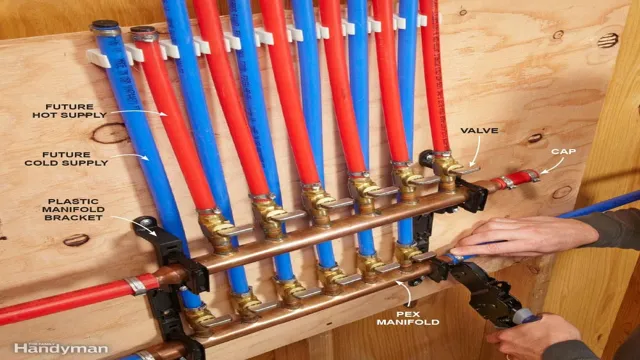
Types of PEX Pipes
PEX (which stands for cross-linked polyethylene) is a type of plastic tubing used in plumbing and heating systems. It is popular for its flexibility, ease of installation, and resistance to corrosion and chemicals. PEX pipes come in different types, including PEX-A, PEX-B, and PEX-C.
PEX-A is the most flexible and durable type of PEX, with the ability to return to its original shape or form after being bent or deformed. PEX-B, on the other hand, is slightly less flexible than PEX-A but more affordable. It is best suited for residential plumbing applications, such as water supply lines and radiant heating systems.
PEX-C, which is the least popular type of PEX, is cheaper than both PEX-A and PEX-B but not as resistant to chemical corrosion. Choosing the right type of PEX pipe boils down to factors such as cost, durability, and specific application requirements.
PEX Pressure Ratings
“How much pressure can PEX hold?” This is a common question many people ask when deciding whether to choose PEX piping for their plumbing needs. PEX pipes are known for their flexibility and durability, making them a popular choice for both commercial and residential plumbing applications. When it comes to pressure ratings, PEX pipes have different levels depending on their diameter size.
Typically, the pressure rating for PEX pipes is between 100 and 200 psi at 73 degrees Fahrenheit and varies based on the type and grade of the PEX material used. It’s essential to verify the pressure rating of your PEX pipes to prevent any potential damage or failures in your plumbing system. Overall, PEX pipes have a significant advantage against traditional plumbing materials and can hold up well under high-pressure situations, making them a reliable choice for your plumbing needs.
Factors that Affect Pressure Rating
PEX Pressure Ratings. PEX, or cross-linked polyethylene, is a popular material used in plumbing systems to replace copper or PVC pipes. One important factor to consider when using PEX is its pressure rating, which indicates the maximum pressure the pipe can handle.
Factors that can affect PEX pressure ratings include the size of the pipe, the temperature and chemicals of the liquid being transported, and the installation method. It’s important to choose the appropriate PEX pipe based on the required pressure rating for the specific application. High pressure can cause PEX pipes to burst, leading to costly damage and repairs.
Therefore, understanding PEX pressure ratings and ensuring proper installation are crucial in maintaining the safety and efficiency of your plumbing system.
Maximum Operating Pressure
When it comes to PEX pipes, it is important to know their maximum operating pressure. PEX pressure ratings indicate the highest pressure that a pipe can handle without bursting. Different types of PEX pipes may have different pressure ratings, so it is important to choose the right type for your specific needs.
For example, PEX-A pipes are known for their flexibility and durability, which allows them to handle higher pressures than other types of PEX pipes. It is important to note that exceeding the maximum operating pressure can lead to bursting, which can be dangerous and costly. Therefore, it is crucial to follow the manufacturer’s guidelines and consult with a professional plumber when choosing and installing PEX pipes.
By doing so, you can ensure that your PEX piping system operates optimally and efficiently for years to come.
PEX Pipe Size and Pressure Rating
When it comes to PEX pipe size and pressure ratings, there are a few things you need to keep in mind. PEX pipes come in different sizes, ranging from 3/8 inch all the way up to 1 inch. The size of the pipe you choose will depend on the application you have in mind.
For example, if you’re using PEX pipes for a hot water supply, you’ll need a larger pipe to accommodate the higher flow rates. In addition to pipe size, you also need to consider pressure ratings. PEX pipes are designed to withstand a certain amount of pressure without rupturing.
The pressure rating of a PEX pipe will depend on the class of the pipe. There are three classes of PEX pipes – PEX-a, PEX-b, and PEX-c – each with their own pressure ratings. PEX-a pipes are the most flexible and have the highest pressure rating, making them ideal for high-pressure applications like hot water supply systems.
PEX-b pipes have a lower pressure rating but are still suitable for most applications. PEX-c pipes, on the other hand, have the lowest pressure rating and are best suited for low-pressure applications like irrigation systems. It’s important to choose the right PEX pipe size and pressure rating for your specific needs to ensure that your system operates efficiently and doesn’t experience any leaks or ruptures.
By understanding the different classes of PEX pipes and their pressure ratings, you can make an informed decision and choose the right pipe for your project.
Applications of PEX Pipes
One of the most important factors when using PEX pipes is understanding the amount of pressure they can handle. The good news is that PEX pipes are ranked as one of the top options for pressure ratings in the plumbing industry. In fact, the pipes are capable of handling up to 200 PSI at a maximum of 200 degrees Fahrenheit.
However, it’s important to note that the pressure rating can vary depending on the diameter of the pipe and the thickness of the walls. It’s always best to consult with a licensed plumber to ensure that the PEX pipes are being used correctly and safely. Overall, PEX pipes have proven to be durable, long-lasting, and suitable for a variety of applications, including water supply lines, radiant floor heating, and even for some industrial uses.
Residential Plumbing
Residential plumbing can be a hassle, especially when it comes to choosing the right type of plumbing material for your home. PEX pipes are becoming increasingly popular among homeowners due to their flexibility, durability, and affordability. PEX pipes are made of cross-linked polyethylene, making them resistant to high temperatures and therefore less likely to burst or leak.
They are also much more flexible than traditional metal pipes, making them easier to install in tight spaces. One of the greatest advantages of PEX pipes is their ability to resist corrosion, which means that they have a much longer lifespan than other plumbing materials. Additionally, PEX pipes are more energy-efficient, and they retain heat better than metal pipes, which results in lower heating bills.
If you want reliable and long-lasting plumbing, then PEX pipes are definitely worth considering for your home.
Radiant Heating Systems
Radiant heating systems have been growing in popularity in recent years, with many homeowners opting for this type of system to keep their homes warm and comfortable during the colder months. One of the most common applications of PEX pipes in radiant heating systems is as part of the tubing that transfers hot water or heated glycol through the system. PEX pipes are preferred for this application as they are flexible, easy to install, and have excellent heat resistance.
This means that PEX pipes can be installed in a variety of locations, including concrete floors, walls, and ceilings, without fear of warping or cracking due to the heat. Additionally, PEX pipes are resistant to burstiness and can withstand high levels of pressure, which is important for maintaining the efficiency and safety of the radiant heating system over time. Overall, using PEX pipes in radiant heating systems is a practical and reliable solution that can help to keep homes warm and comfortable during the cold winter months.
Conclusion
To sum it up, PEX is one tough cookie. It can handle a significant amount of pressure without breaking a sweat. In fact, it’s capable of handling pressures of up to 200 psi or even higher, depending on the size and type of PEX used.
So, if you’re looking for a durable and reliable piping material, PEX is definitely worth considering. Just make sure to follow the manufacturer’s guidelines and installation instructions to ensure maximum performance and longevity. With PEX by your side, you can rest assured that your plumbing system is in good hands – or should we say, good pipes!”
FAQs
What is the maximum pressure rating for PEX pipes?
The maximum pressure rating for PEX pipes is typically 100 PSI at 180°F.
Can PEX pipes handle hot water?
Yes, PEX pipes can handle hot water. They are rated to withstand temperatures up to 200°F.
What is the minimum bend radius for PEX pipes?
The minimum bend radius for PEX pipes is typically 8 times the diameter of the pipe.
Can PEX pipes be used for outdoor applications?
Yes, PEX pipes can be used for outdoor applications as they are resistant to UV rays and can withstand extreme temperatures.
Can PEX pipes be used for gas lines?
No, PEX pipes cannot be used for gas lines as they are not rated for gas applications.
What is the expected lifespan of PEX pipes?
PEX pipes have an expected lifespan of 50 years or more, depending on usage and maintenance.
Can PEX pipes be connected to copper pipes?
Yes, PEX pipes can be connected to copper pipes using fittings designed for the purpose.
